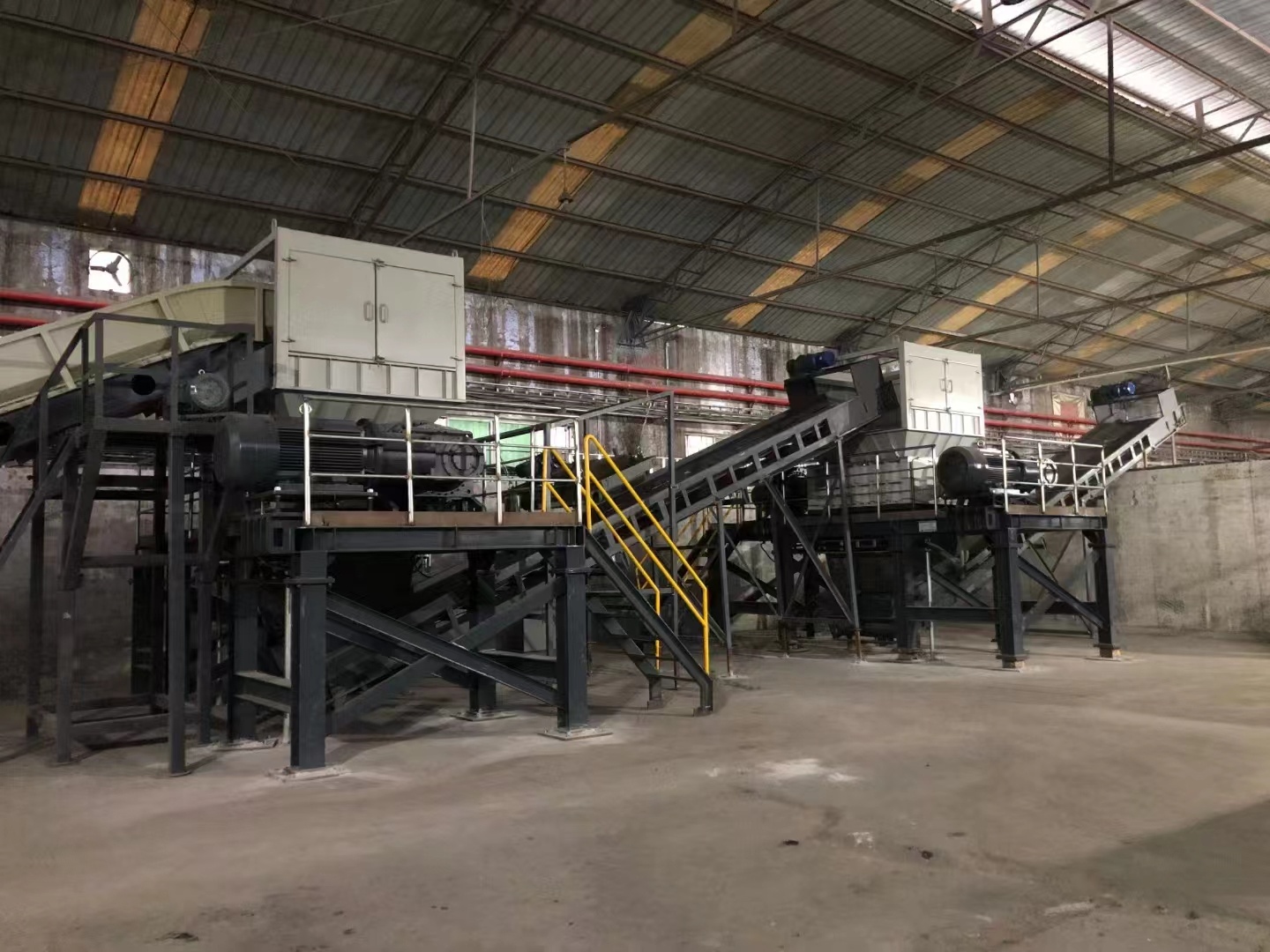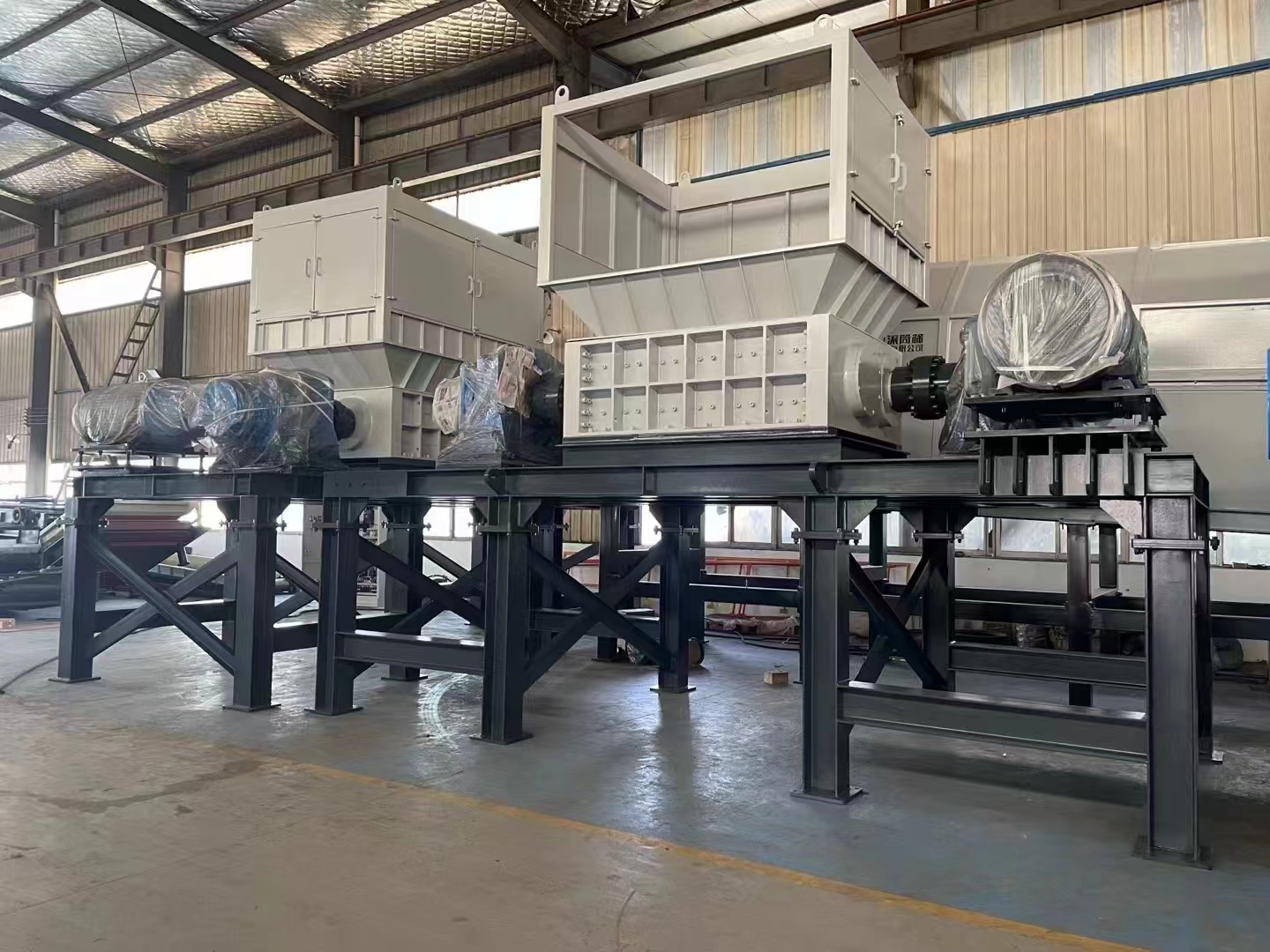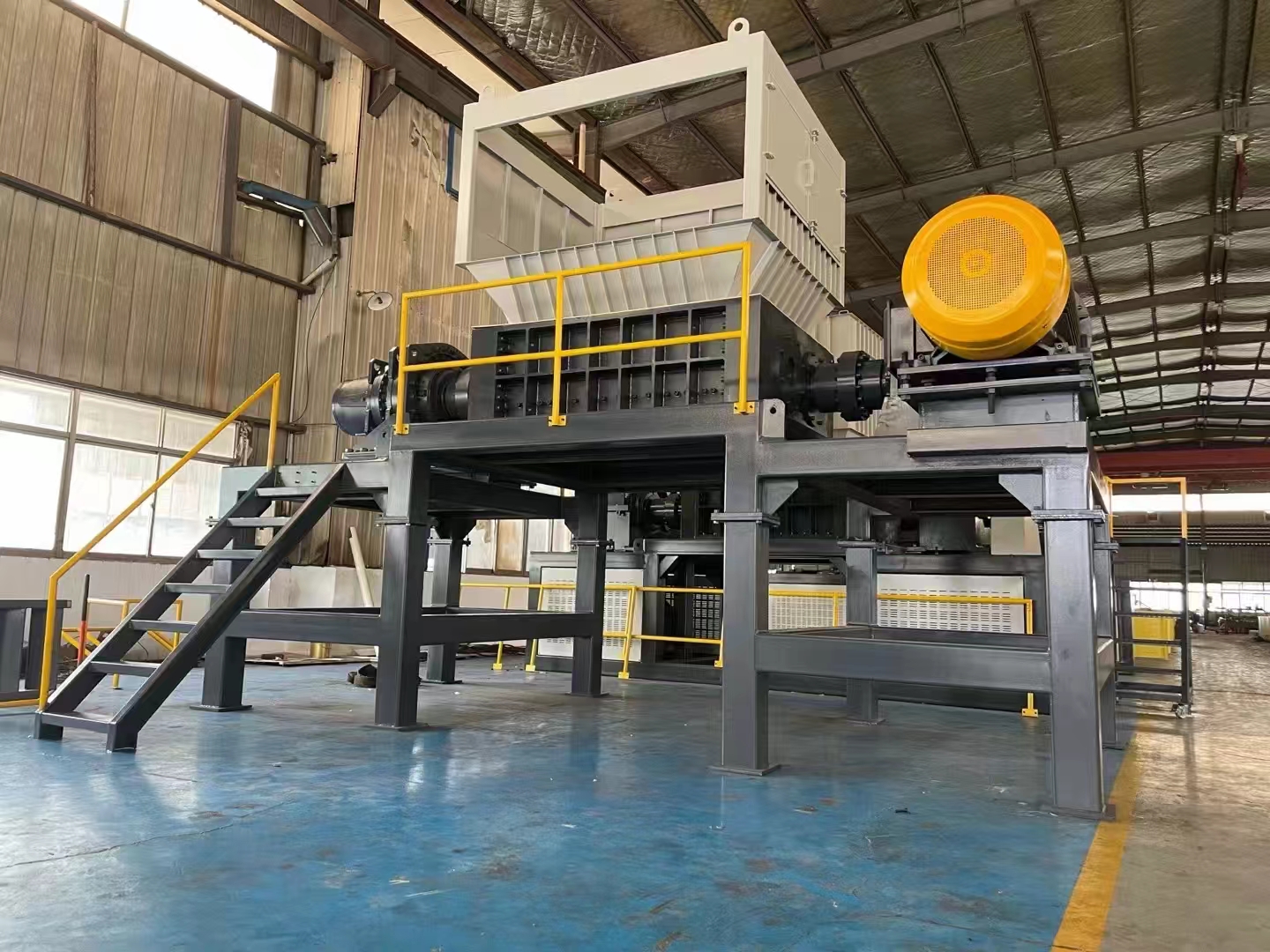A scrap steel shredder machine
A scrap steel shredder machine is a specialized piece of heavy machinery designed to reduce large volumes of scrap metal, particularly steel, into smaller, more manageable pieces. These machines are essential in the recycling industry and are used to prepare scrap metal for further processing and eventual reuse.

Key Components and Features:
Heavy-Duty Frame: These machines are built to withstand the rigors of processing large, heavy, and sometimes irregularly shaped pieces of scrap metal. The frame is typically made from high-strength steel.
Powerful Motor: A scrap steel shredder requires a very powerful motor to generate the necessary force to break down the metal. Motors can range from several hundred to thousands of horsepower.
Cutting or Crushing Mechanism: Most scrap steel shredders use a combination of cutting and crushing mechanisms. Common designs include:
- Hammermill: This uses a series of rotating hammers or blades that strike the metal and break it down.
- Twin-Shaft Shredder: This utilizes two rotating shafts fitted with interlocking teeth or blades to shear and crush the metal.
- Shear Shredder: This employs a set of large, powerful shears to cut the metal into smaller pieces.
Hydraulic Transmission: Many modern scrap steel shredders use hydraulic transmissions to manage the high-torque operations required for shredding metal.
Screen System: A screen or grate is often used to control the size of the shredded output. The material continues to be shredded until it passes through the screen openings.
Safety Features: Advanced safety features are included to protect operators and ensure compliance with industry standards. These may include emergency stop buttons, safety interlocks, and protective barriers.
Operation:
- Feeding: Scrap metal is loaded into the shredder, usually via a conveyor or a grab crane.
- Shredding: The metal is subjected to intense forces, including impact, shear, and compression, which break it down into smaller pieces.
- Sorting: After shredding, the resulting pieces are often sorted by size, weight, and magnetic properties to separate ferrous from non-ferrous metals.
- Output: The shredded metal is collected and prepared for further processing or sale to steel mills for remelting

Applications:
- Recycling: Reduces the volume of scrap metal, making it easier to store and transport.
- Resource Recovery: Facilitates the extraction of valuable metals from complex scrap mixtures.
- Waste Management: Helps manage and reduce the environmental impact of scrap metal disposal.
Advantages:
- Efficiency: Can process large volumes of scrap metal quickly and effectively.
- Versatility: Capable of handling a wide variety of scrap metal types and sizes.
- Economic: Reduces the cost of storage and transportation by reducing the volume of scrap.
- Environmental: Promotes sustainable use of resources and reduces landfill waste

-
 Trommel screenTrommel screen, also known as drum screens, are widely used in various industries for sorting and separating materials.Get Quote
Trommel screenTrommel screen, also known as drum screens, are widely used in various industries for sorting and separating materials.Get Quote -
 Crop straw double shaft shreddApplications:Biomass Energy Production: Shredded straw can be used as a feedstock for bioenergy plants to produce electricity or heat.Livestock Feed: Reduced-si...Get Quote
Crop straw double shaft shreddApplications:Biomass Energy Production: Shredded straw can be used as a feedstock for bioenergy plants to produce electricity or heat.Livestock Feed: Reduced-si...Get Quote -
 Zhongcheng Air Drum SeparatorAir drum separators effectively separate lightweight materials (e.g., plastics, paper) from heavier materials (e.g., metals, glass). This high efficiency is cru...Get Quote
Zhongcheng Air Drum SeparatorAir drum separators effectively separate lightweight materials (e.g., plastics, paper) from heavier materials (e.g., metals, glass). This high efficiency is cru...Get Quote
-
2024-08-05Hot-sell Coconut Shredderworking principleCoconut shell shredder usually uses the force generated by cone and spiral to evenly squeeze the coconut meat in the grinding chamber between t...
-
2024-08-12The Advantages of Horizontal Baling TechnologyA horizontal baler, also known as a horizontal baling machine, is a piece of equipment used for compressing materials and wrapping them into bales. This process...
-
2024-07-12Crush to Create: The Ultimate Eco-Friendly Plastic Shredder RevolutionThe working principle of a plastic shredder is mainly to tear large plastic materials into small pieces or fragments through mechanical force, in order to facil...
-
2024-05-18Jaw CrusherThe working principle of jaw crusher Although the jaw crusher has various structural types, its working principle is the same, that is, the material is crushed ...
-
2024-08-07Tire double shaft shredderOperation:Feeding: Whole or pre-cut tires are fed into the shredder through an inlet hopper.Shredding: As the tires enter the shredding chamber, the rotating cu...



